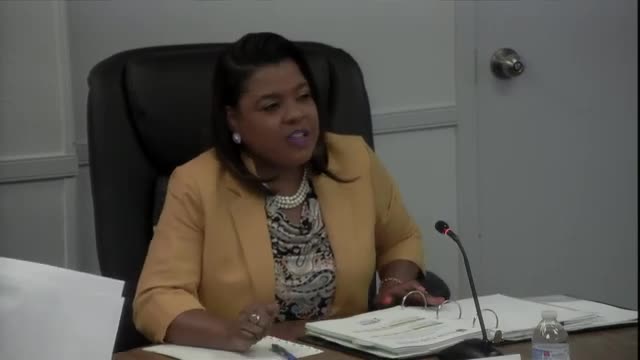Education officials reveal alarming reading proficiency data
October 24, 2024 | NORFOLK CITY PBLC SCHS, School Districts, Virginia
This article was created by AI summarizing key points discussed. AI makes mistakes, so for full details and context, please refer to the video of the full meeting. Please report any errors so we can fix them. Report an error »

During a recent government meeting, officials provided an update on the reading proficiency levels of third-grade students, focusing on the administration of the Virginia Language and Literacy Screening (VALS) assessment. This assessment is part of the broader goal to increase the percentage of students reading at or above grade level from 45% in the 2021 school year to at least 75% by the 2026-2027 school year.
Dr. Pohl, who presented the findings, noted that the VALS assessment categorizes students into three risk levels: low, moderate, and high. The data revealed that 32.3% of first graders are at low risk of not reading on grade level, while 39.9% are identified as high risk. For second graders, 31.6% are at low risk, and 36% are considered high risk.
The report highlighted strengths and weaknesses in student performance. First graders excelled in identifying letter names, phoneme blending, vocabulary fluency, and rapid automated naming. Conversely, they struggled with letter sounds, real-world decoding, pseudo-word decoding, and expressive comprehension. Second graders showed similar trends, scoring highest in letter names and phoneme blending but facing challenges in phoneme segmenting and passage retell.
As the administration continues to refine its literacy goals, the data from the VALS assessment will be crucial in shaping future strategies to enhance reading proficiency among students. The next review of this data is scheduled for the 2024-2025 school year, as the new assessment framework is still being established.
Dr. Pohl, who presented the findings, noted that the VALS assessment categorizes students into three risk levels: low, moderate, and high. The data revealed that 32.3% of first graders are at low risk of not reading on grade level, while 39.9% are identified as high risk. For second graders, 31.6% are at low risk, and 36% are considered high risk.
The report highlighted strengths and weaknesses in student performance. First graders excelled in identifying letter names, phoneme blending, vocabulary fluency, and rapid automated naming. Conversely, they struggled with letter sounds, real-world decoding, pseudo-word decoding, and expressive comprehension. Second graders showed similar trends, scoring highest in letter names and phoneme blending but facing challenges in phoneme segmenting and passage retell.
As the administration continues to refine its literacy goals, the data from the VALS assessment will be crucial in shaping future strategies to enhance reading proficiency among students. The next review of this data is scheduled for the 2024-2025 school year, as the new assessment framework is still being established.
View full meeting
This article is based on a recent meeting—watch the full video and explore the complete transcript for deeper insights into the discussion.
View full meeting
